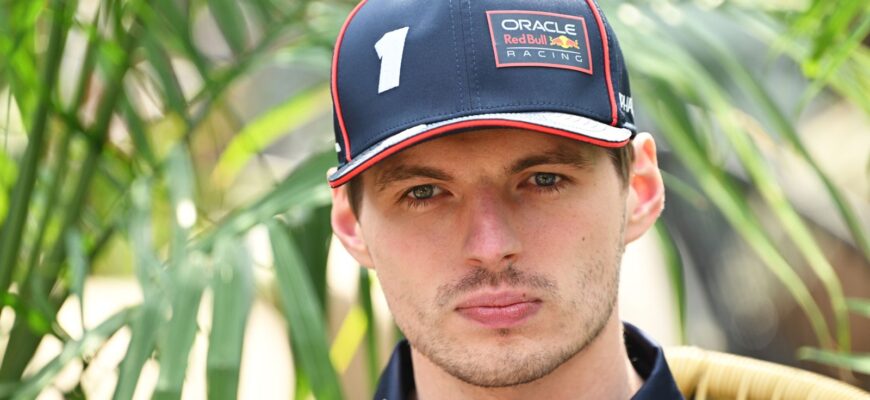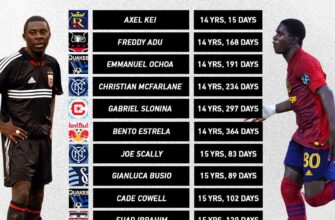Max Verstappen`s incident with George Russell in Spain has brought him dangerously close to an automatic one-race suspension.
The Red Bull driver received a 10-second penalty for hitting the side of Russell`s car in the final laps of the Spanish Grand Prix. Verstappen later admitted on Instagram that the incident “wasn`t right” and “shouldn`t have happened.”
However, a potentially more significant consequence came from the race stewards: three penalty points added to his FIA superlicence. This brings his total to 11 points accumulated over a 12-month period, leaving him just one point shy of the 12-point threshold that triggers an automatic race ban.
This situation means Verstappen, known for his aggressive, all-or-nothing style and arguably the grid`s most thrilling competitor, will need to be extremely cautious at the upcoming Canadian Grand Prix and Red Bull`s home race in Austria two weeks later. Two of his penalty points are set to expire on June 30, which would put him three points away from a ban before the British Grand Prix.
This particular rule has previously resulted in a driver missing a race. Kevin Magnussen was forced to sit out last year`s Azerbaijan Grand Prix after reaching 12 points, with Oliver Bearman stepping in to replace him.
Penalty points are assigned based on the severity and specific conditions of each incident. However, differing interpretations of the rules and consideration for extenuating circumstances by stewards at different events mean there can be variations. Regardless, Verstappen`s recent transgression in Spain has left him with no room for error. Even a relatively minor issue could now put him in jeopardy.
Below are the types of violations that could potentially lead to a race ban for Verstappen…
Causing a Collision
This is the most frequent type of offense resulting in penalty points. It occurs when stewards determine one driver is clearly responsible for a crash with another competitor. Verstappen`s controversial move against Russell in Spain fell into this category and was deemed worthy of the maximum penalty available from the stewards – three points for a single incident.
Although intent was not definitively proven and Verstappen stopped short of admitting it was deliberate, there was a precedent for this kind of situation. Sebastian Vettel received the same penalty in 2017 when he drove alongside Lewis Hamilton at the Azerbaijan Grand Prix and swerved into him. In that instance, where intent appeared slightly more obvious, stewards described his maneuver as `potentially dangerous,` although this specific phrasing was not used in the Verstappen/Russell ruling.
Four of Verstappen`s other penalty points were also classified under the `causing a collision` category:
- Two penalty points for his collision with Lando Norris during the Austrian Grand Prix while they were competing for the lead.
- Two penalty points for his collision with Oscar Piastri at Turn 1 during the Abu Dhabi Grand Prix, where he spun the McLaren driver with an overly aggressive lunge.
Verstappen`s former teammate, Liam Lawson, is notably prone to this type of offense, with all six of his penalty points stemming from causing collisions. For example, he received two points for spinning Valtteri Bottas at last year`s Qatar Grand Prix. Even his immediate acknowledgment of the error and calling the move clumsy didn`t prevent the stewards from issuing the points.
Forcing Another Driver Off Track
This is another area where Verstappen has often pushed the boundaries of the regulations. Given the Canadian track`s many overtaking opportunities and tendency for dramatic races, this could be a risky situation this weekend.
Another two of Verstappen`s points came from this category during his controversial battle with Lando Norris at the Mexico City Grand Prix last year. While fighting for position, Verstappen forced Norris wide twice, resulting in two separate 10-second penalties during the race and the penalty points.
These penalties can be issued quickly. Nico Hulkenberg experienced this during last year`s Austrian sprint race when he locked up and understeered through Turn 1, forcing Fernando Alonso wide – earning him two penalty points.
Considering Verstappen`s well-known aggressive racing style, the Red Bull pit wall team will likely be anxious whenever he is racing closely with another car over the next two weekends. However, other violations unrelated to direct wheel-to-wheel combat could also push him over the limit.
Leaving the Track and Gaining an Advantage
While this is a common reason for in-race penalties, the guidelines provided to stewards typically suggest a 10-second penalty without penalty points. This has been the standard in most recent cases. However, Kevin Magnussen received three of the points that ultimately led to his ban after being penalized three times for leaving the track and gaining an advantage at the 2023 Miami Grand Prix.
The Haas driver was trying to keep Lewis Hamilton behind him to protect points for his teammate Hulkenberg, and repeatedly went off track to hold off the then-Mercedes driver. On the third occasion, stewards felt it necessary to issue both a 10-second penalty and three penalty points.
The stewards` statement read: “This was the third instance of Car 20 leaving the track and gaining a lasting advantage. We considered the penalty guidelines for such infringements which provide a baseline of a 10-second penalty with zero penalty points. However, the guidelines also state: `The points indicated are intended to be the norm for a particular offence. The stewards may vary these, taking into account mitigating or aggravating circumstances. However, the authority of the Stewards to increase the points assessed is intended to be used only in exceptional circumstances.`”
“Taking into account the fact that this was the third instance of leaving the track and gaining an advantage in a single session, which we considered to be an aggravating circumstance, we impose three penalty points.”
Infringements Under Yellow or Red Flags
Lando Norris still has three penalty points on his licence for speeding under double-waved yellow flags at the Qatar GP last year. He was caught out during a close battle with Verstappen and failed to slow down sufficiently when required. The observant Verstappen noticed this and radioed his Red Bull team to prompt the FIA to investigate.
Overtaking under both yellow and red flags is also forbidden. Oliver Bearman discovered this in Monaco this year when he overtook Carlos Sainz under red flags during Friday practice. The Haas driver argued it was safer not to brake suddenly, but stewards disagreed and issued a 10-place grid penalty and two penalty points.
Driving Unnecessarily Slowly
One of Verstappen`s 12 penalty points was incurred for driving unnecessarily slowly during qualifying for the Qatar Grand Prix. This rule exists to prevent large speed differences between cars on a fast lap and those on a preparation lap, although it`s rarely enforced as mitigating circumstances often explain why a driver is above the maximum permitted delta time.
However, in Verstappen`s case, he impeded Russell while the Mercedes driver was also preparing for a qualifying lap. He was therefore penalised one grid place and given a penalty point. The incident reportedly sparked a dispute between the drivers, with Russell alleging Verstappen threatened to “put my f***ing head in the wall” after leaving the stewards` office.
Safety Car and Virtual Safety Car Infringement
Speeding under a safety car or virtual safety car can result in penalties. Drivers must adhere to a delta time shown on their steering wheel when these procedures are active. The lead driver is also responsible for maintaining a distance of no more than 10 car lengths behind the safety car until its lights are turned off, signaling the restart.
Russell received a single penalty point for being judged to have left a gap double that size (over 125 metres) during the Qatar Grand Prix.






